Educational Garden at the Pleasanton Community Farm
Welcome to the webpage for our UC Master Gardener Educational Garden at The Pleasanton Community Farm! We are excited to be embarking on our newest garden in partnership with the City of Pleasanton.
Our vision for this garden is to provide an inspirational, educational place for the community. A place where home gardeners, school children and community members come to learn about healthy, sustainable gardening through hands-on demonstrations, talks, classes and workshops.
The design for the garden includes fruit trees, vegetables, drought tolerant plants and succulents. There will be pollinator friendly gardens and native plants gardens. We also plan to use this site for our annual plant sale, growing the vegetables and offering them to the public here.
The garden is located on Laguna Creek Lane in Pleasanton. It’s so new, we don’t have a street address yet, but it’s at the intersection of Valley Avenue and Laguna Creek Lane. Our signs will be up shortly.
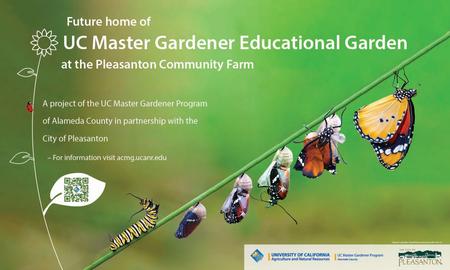
As the caterpillar goes through various stages of development, so must our garden. This project will take many years before our beautiful butterfly emerges. You can follow our progress on this page and on our Alameda County Master Gardener Facebook and Instagram pages.
We are also fundraising for this project. If you would like to donate, please click here
Select UCCE Alameda County Education Center-Pleasanton in the designation field. By selecting this you ensure your donation goes directly toward our garden. Any donation is greatly appreciated and all donations are tax deductible.
Our first step in the development process is to plant a cover crop. What is a cover crop, you ask? A cover crop is grown to protect and improve the soil. It has many benefits, including:
- Covering the soil to prevent wind and rain erosion
- Improving the soil structure
- Enhancing water filtration
- Adding nitrogen to the soil and increasing soil organic matter
- Suppressing weeds
- Controlling pests by inviting beneficial insects
- Increasing biodiversity by providing habitats for pollinators
While a cover crop can be planted anytime of the year, we are planting ours now to take advantage of our winter rains. It’s a mix of wildflower seeds and biobuilder seeds that have been graciously donated to us by seeds for bees, a part of project Apis.m. Seeds in the BioBuilder mix are specifically chosen to improve soil health. If you would like to plant a cover crop of your own we have seed packets available, while they last, at the Pleasanton, Dublin and Livermore libraries.
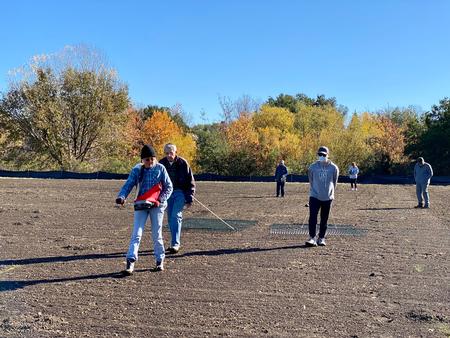
By early spring the once weedy field should be filled with wildflowers and other plants that will nourish the soil.
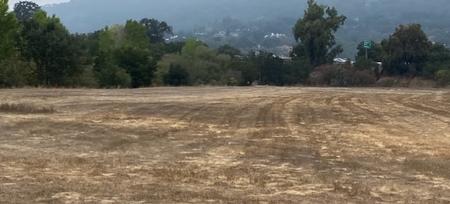
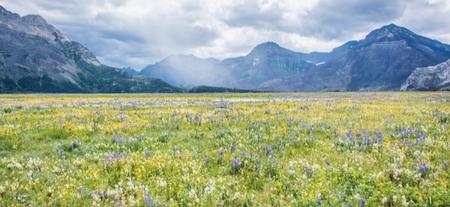
Between now and spring there will be several activities happening.
The official groundbreaking with The City of Pleasanton Leaders and UC Master Gardener Program staff and volunteers is on tap for early January. The exact date is to be determined. We will update this webpage and our social media feeds as soon as we know the date.
Our signs will be going up at the property location on Laguna Creek Avenue and on the Marilyn Murphy Kane Trail.
And you will see us on site monitoring our cover crop’s progress. Please feel free to stop by, say hi and ask us about our plans and what’s next.
As for what’s next, check back often as we will post our updates here.
Cover Crop Planting Guidelines
Here are some guidelines for using your cover crop seeds: 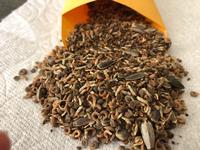
Timing: Plant while soil is still warm (above 55 degrees), ideally between September 1st and November 10th.
Ground preparation: Remove debris and large stones. If broadcasting the seeds over loose/sandy soil, no ground preparation may be necessary. If you have clay or heavy soil, you may want to disturb or turn up the soil with a garden rake or a cultivator.
Planting and Irrigation: Plant seeds no deeper than ¼ inch, in continually moist soil. Lightly rake again to cover the seeds. Take advantage of winter rains or irrigate to ensure the root zone has available water until roots reach 6” depth.
In Spring: As soon as the ground is dry enough, turn the cover crop under and into the soil. It should decompose over two to three weeks, so plan for planting your garden accordingly. Do not allow cover crops to go to seed - you may wind up with unwanted weeds. Cut down your cover crop when or just before they flower.
Here are some additional resources on cover crops (aka green manure) :
https://sonomamg.ucanr.edu/The_Kitchen_Garden/Additional_KG_Articles/Green_Manure_Cover_Crops/
https://caes.ucdavis.edu/news/cover-crop-your-garden

